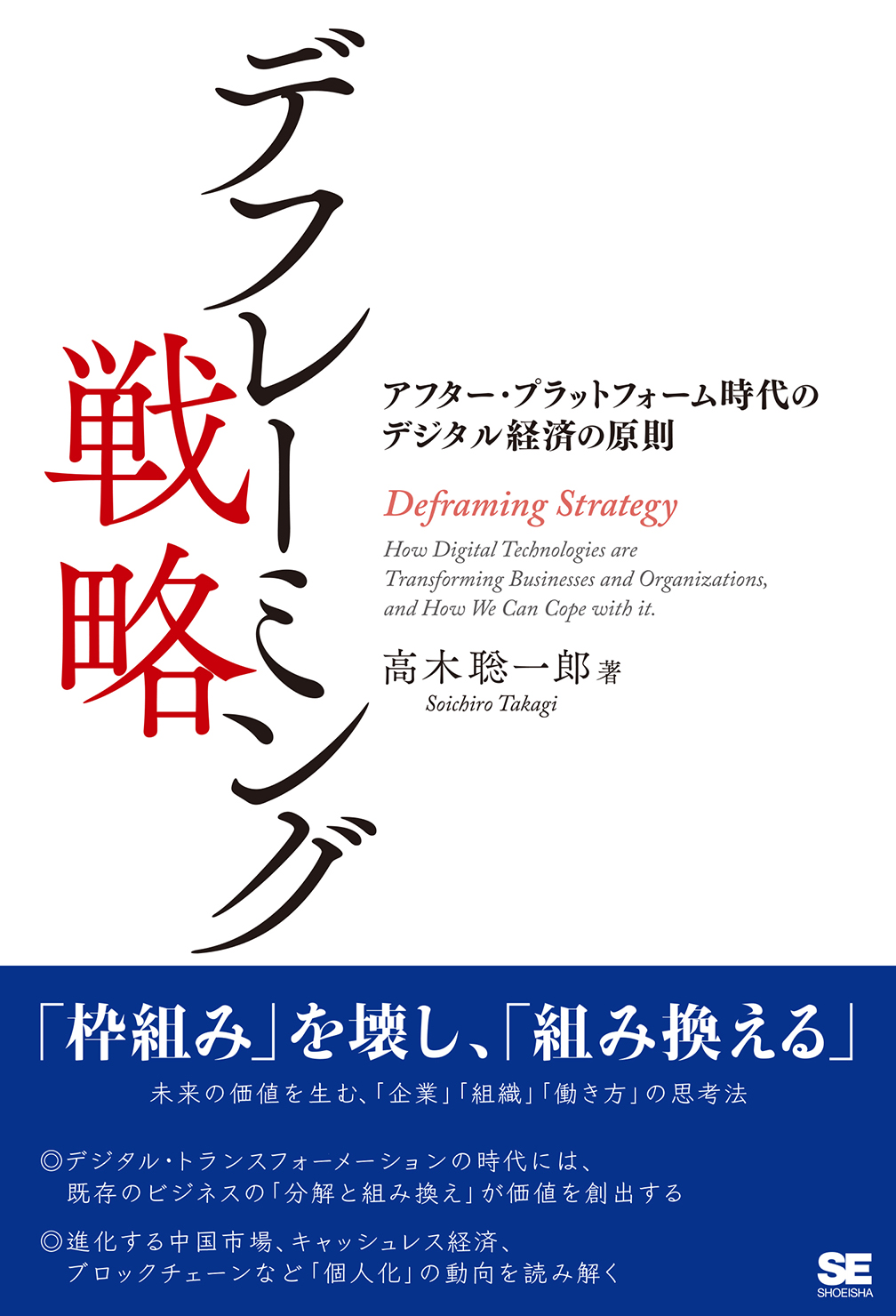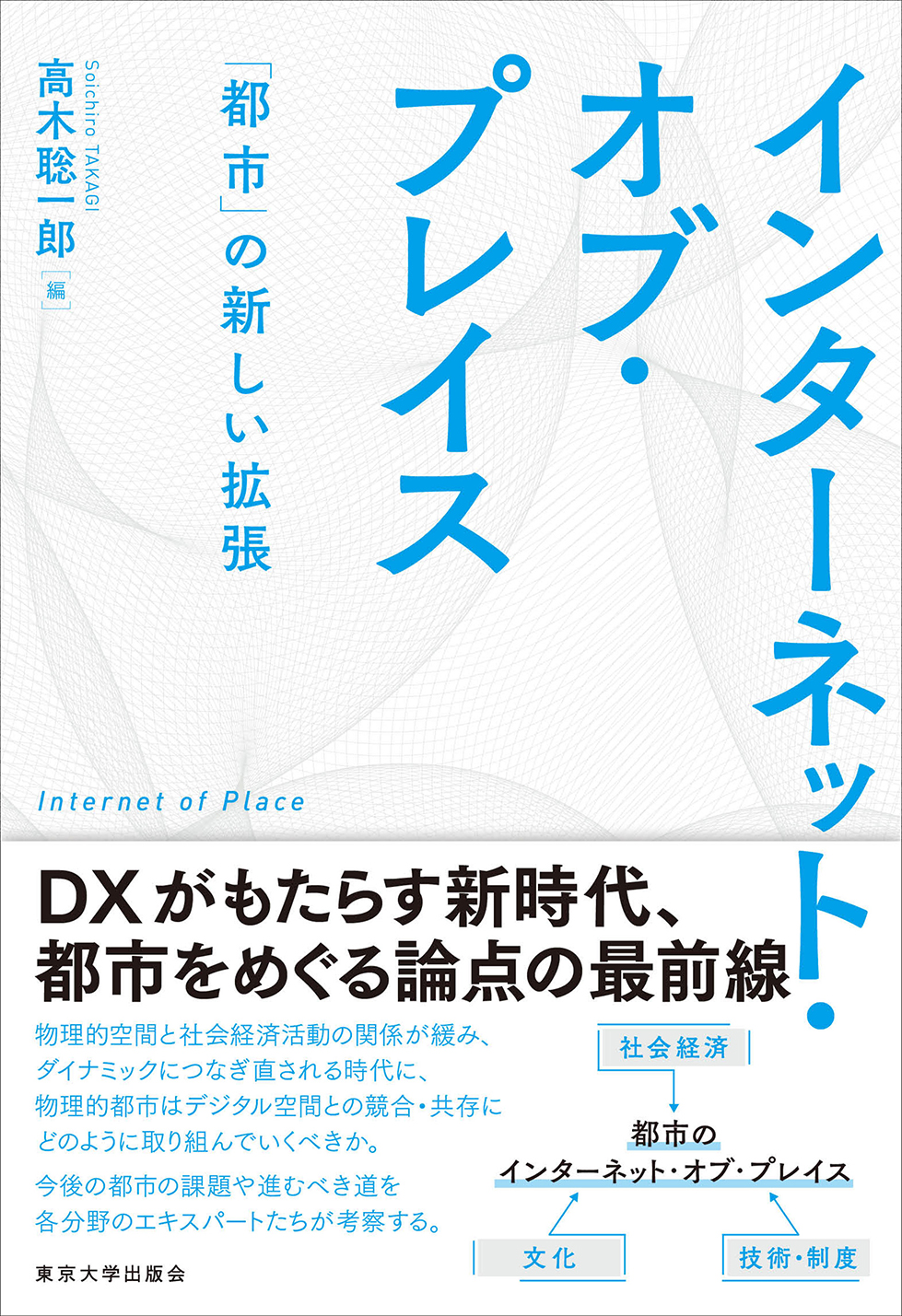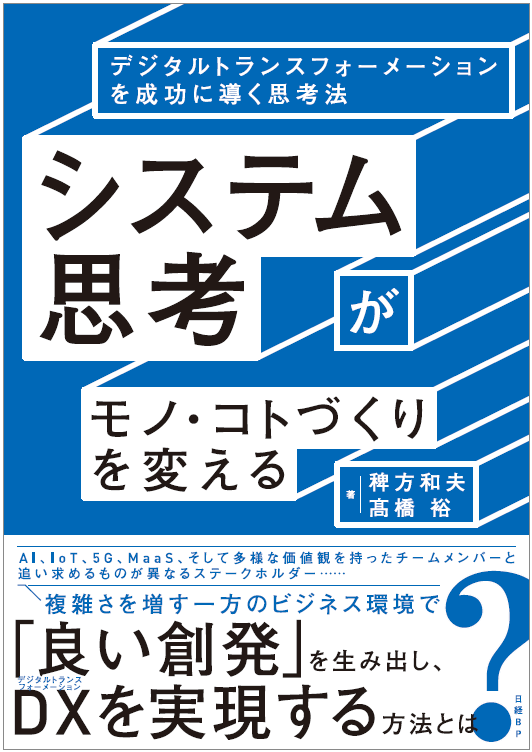
Title
Deframing Strategy How Digital Technologies are Transforming Businesses and Organizations, and How We Can Cope with It
Size
176 pages
Language
English
Released
November, 2021
ISBN
978-981-12-4369-1
Published by
World Scientific
Book Info
Japanese Page
The term “digital transformation,” also known as DX, is frequently featured, but the essential impact of digital technologies on businesses and economies has not yet been clearly defined. This book introduces the concept of “deframing” to help understand the impact of digital technologies on economy. Deframing, which is essentially a made-up word, means “destruction” of the existing frames. Deframing consists of three elements: dissolution and reintegration, specific-optimization, and individualization.

The first element “dissolution and reintegration” suggests that businesses specialize in a certain aspect and eventually reintegrate the aspects beyond the existing frames.
The second element “specific-optimization” refers to optimization with regard to specific users beyond the frame of the ready-made products without causing any increase in customization costs.
The third element “individualization” is indicative of the era in which individuals harness their capabilities beyond the frames of organizations.
These changes are already visible in various aspects of the society. For example, instead of going from shop to shop looking for a pair of our favorite shoes, we can instantly order shoes with a design and texture of our choice. In another case, social networking services function not only as places for sharing pictures and comments, but also as places for information-sharing, advertisements by influencers, and merchandising. In crowdsourcing services, many individuals are harnessing their capabilities for jobs which were performed by computer system companies or design firms. As can be seen in these examples, deframing is a key concept to comprehensively understand the wide-ranging transformations in business models, industrial structures, and work styles.
This book illustrates these concepts with cutting-edge business cases around the world.
This book is the updated version of original Japanese edition “Deframing strategy”.
(Written by TAKAGI Soichiro, Professor, Interfaculty Initiative in Information Studies / 2024)
Table of Contents
Chapter 1 The End of “Economies of Scale”
Definition of Deframing and Its Three Factors
Dissolving and Reintegrating Elements Beyond Frames
Scaling Specific-Optimization
Individualizing Industrial Structure
Efficient Resource Allocation as a Fundamental Force
Chapter 2 Deframing Mechanism
Beginning of the End of Hierarchical Organizations
Why Were Corporate Organizations Required?
Transaction Cost Theory Defining Organizational Form
Companies as Mutual Aid Organizations
Disadvantages of Mature Organizations
Drastic Reduction in Transaction Costs Through Technological Evolution
Empowerment of Individuals by the Internet
Dissolution of Organizations by Platform Revolution
Dissolving Services and Digital Reconstruction
The New Era of the Personal Industry and the Restoration of the “Invisible Hand of God”
Part II The Process of Deframing
Chapter 3 Dissolution and Reintegration
Transformative Tech Services and Deframing
Transformation from Payments to Mediating Trust
Restructuring of the Industrial Structure by Deframing
Rebuilding Services with “Digital-First”
“Z-shape” Strategy of Deframing
Social Commerce as Dissolution and Reintegration
Deframing in Logistics and E-Commerce
Impact of Deframing on Existing Business Models
Seamless Service Realized by the Application Programming Interface Economy
Deframing in Energy Sector
Technological Frontier is the Collaboration of Autonomous Subsystems
Open Networks for the Realization of Digital Twin
How Should a Business be Dissolved?
Dissolution and Reintegration as a Basic Strategy in the 21st Century
Chapter 4 Specific-Optimization
How to Respond to Diversified Values and Demands
Personalization of Information Services
Personalization that Transforms Manufacturing into Service
Beyond Servitization
The Back-and-Forth History of Specific-Optimization
Achieving Variety Through the Use of a Platform
If Something is Truly Necessary, It is Worth the Cost
Specific-Optimization for Hardware
Specific-Optimization of Infrastructure
Deframing in Regional Revitalization
Issues with Overall Optimization in the Euro
Limitations of Individual Optimization
Chapter 5 Individualization
Individuals Have the Resources for Modern Business
The Sharing Economy as an Epitome of Individualization
Increasing Number of Freelancers 89
Individualization of Industries Driven by Platforms
Influencer Marketing by Individuals
New Workstyles Supported by Co-Working Spaces
Providing a Variety of Co-Working Spaces
Industrial Promotion Should Focus on Individuals
Part III Organizations and Individuals in the Age of Deframing
Chapter 6 Trust in the Deframing Society
Increasing Importance of Trust in the Deframing Age
Three Ways to Enable Digitalized Trust
Limitation of E-Word-of-Mouth
Blockchain as the Internet of Trust
What is the Trust Provided by the Blockchain?
Incentivization Through a Token Economy
Does the Blockchain Eliminate Hierarchical Organizations?
Towards a Trusted Decentralized Trust
Chapter 7 Personal Strategies in the Age of Deframing
Super-Aging Society and Prolonging Career Time
The Illusion and Challenges of “Lifetime Employment”
Can Basic Income Become the Key to Solving Technological Unemployment?
Career Strategy in the Age of Deframing
Importance of Becoming Unique
Leadership and Re-Learning in the Deframing Age
Education in the Age of Personalization
The Ultimate Goal of Education is to Learn How to Learn
Chapter 8 Challenges and Prospects of Deframing
Oligopoly of Platforms
Accumulation of Credit Information and Individual Independence
Deframing and Privacy
Need for Community and Social Security Mechanisms
Restoring Cities as Cradles for Innovation
Related Info
Deframing Lab, Inc.
https://deframing.org/english/
Japanese version:
“Deframing Strategy” Shoeisha 16th Jul. 2019
https://www.shoeisha.co.jp/book/detail/9784798162782



 Find a book
Find a book





